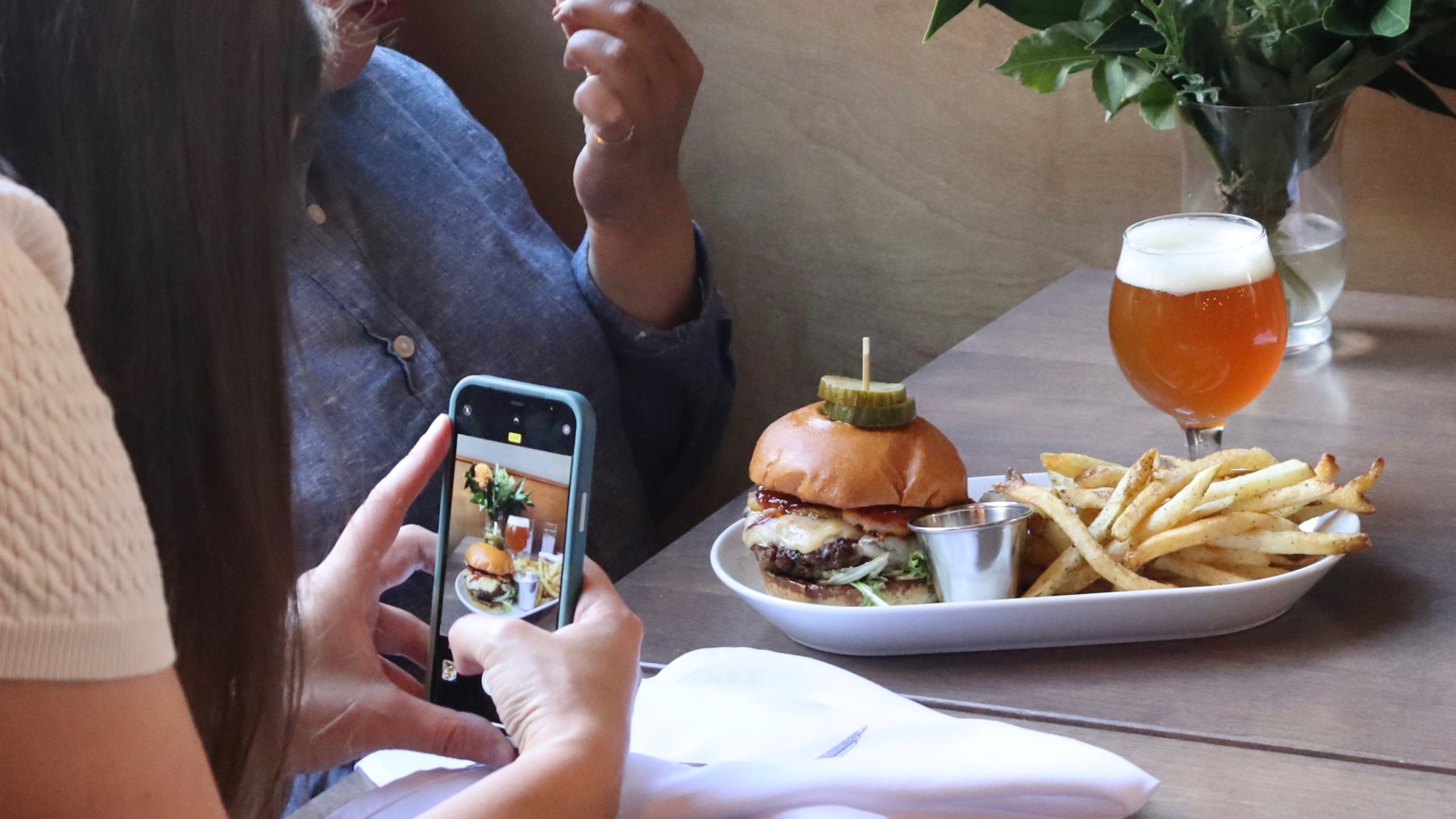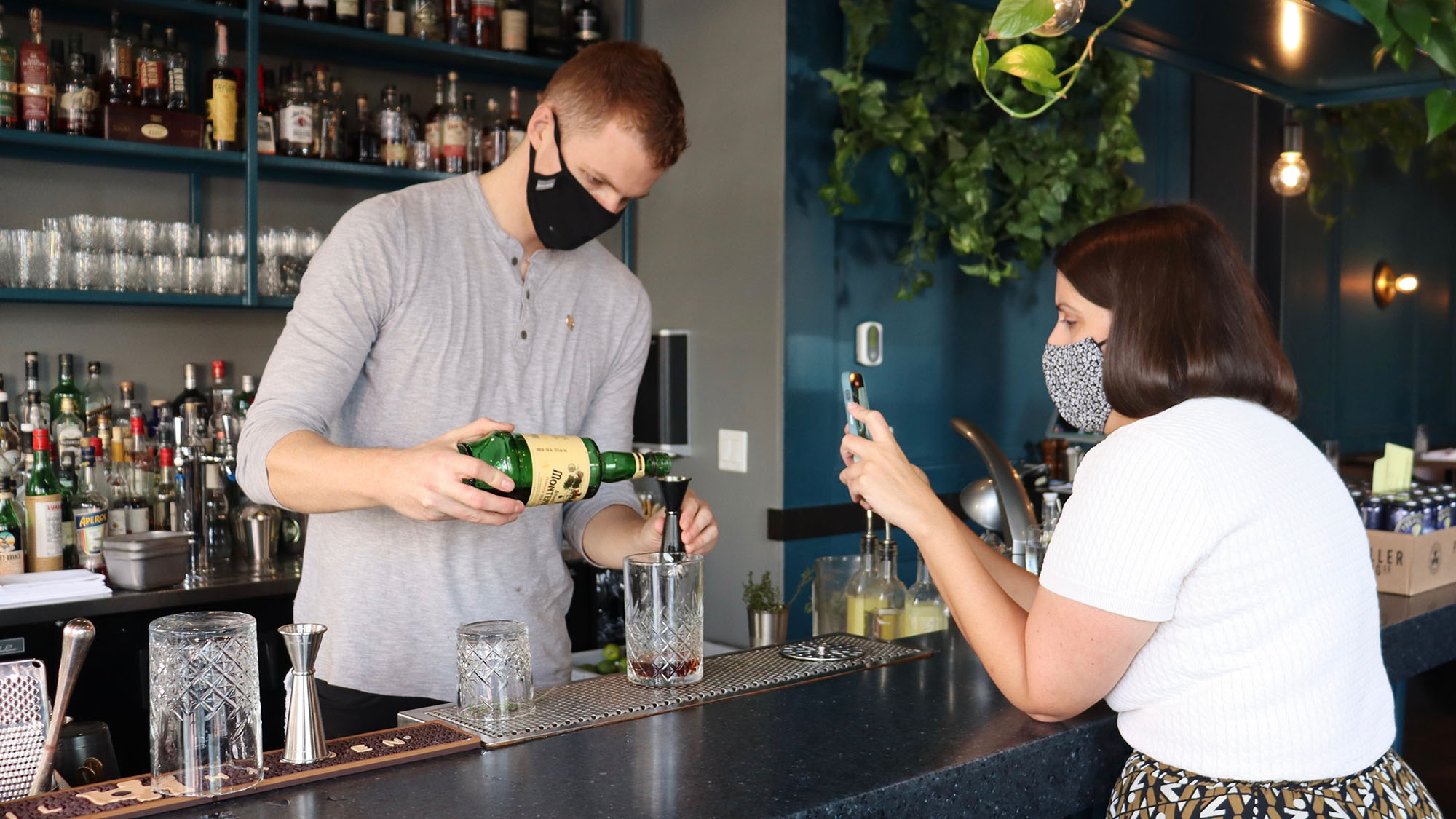Dishing it out

caption
Shannon MacIntyre took photos and videos to promote Julep Restaurant’s burger for Halifax Burger Week. The restaurant hired MacIntyre to make content for Instagram.How journalists are using food to tell important stories
Simon Thibault rolls his eyes just thinking about sparkly $20 doughnuts and toothache-inducing — yet wildly photogenic — Unicorn Frappuccinos. The stalk of wheat flexing its muscles on his T-shirt stands in solidarity with him against the superficial “crumb shots” of bread he sees far too often on Instagram. The colourful sprinkles feed his inner child, but as a food journalist, he worries that these “Instagrammable” foods are preventing people from seeing the beauty of food that can’t be captured in a photo.
The #food hashtag accounts for more than 460 million posts on Instagram. But according to Thibault, Instagrammable foods can create a “cultural and culinary myopia.”
Close-up pictures of fresh sourdough loaves and videos of knives sawing through bubbly crusts of warm baguettes have trained people to think this highly specific French-based form of baking is the ultimate standard. Because of that, other bakery cultures that don’t produce an open, airy crumb are forgotten.
“It’s not to be dismissive or glib,” he says. “Yeah it’s fun, but it’s all style over substance.”
He says food journalism is a vehicle to break down vague understandings of certain ingredients, dishes and cultures.
Thibault’s book, Pantry and Palate: Remembering and Rediscovering Acadian Food, uses traditional recipes as portals to a more nuanced understanding of his Acadian heritage.
According to Thibault, poverty and subsistence defined much of traditional Acadian cuisine. Classic recipes like cornmeal molasses bread were hearty and cheap to make.
But the use of inexpensive ingredients like molasses exposes the role Atlantic Canada played in the slave trade.
He says ships left the Maritimes with salt fish to feed slaves and indentured workers in sugarcane growing regions. In return, they were sent back home loaded with molasses.
“We all love molasses….We think of molasses as a sweet thing, but it’s a byproduct of slavery.”
He argues the aesthetic-driven nature of Instagram is excluding nuanced details of history and changing the way people measure the value and quality of their food. That’s why food journalists are important now, more than ever.
What is food journalism?
When Thibault was in journalism school, he knew he wanted to write about food. His classmates pictured him dining in a candle-lit room critiquing elegant pastries and buttery steak, a common misunderstanding of the practice. But the stories that food journalists tell are more than that. They’re stories from all over the world, told through the lens of one of the most universal human experiences: food.
According to A New York Times article, it was Jane Nickerson, food editor at the New York Times from 1942 to 1957, who laid the foundation for modern food journalism and coined the term “food writing.”
Nickerson was one of the first journalists to write stories about food that weren’t regurgitated recipes in the women’s pages of newspapers. She interviewed chefs, and explored food stories, technology and food science.
Her work included all of the things the best journalism does: clear language, compelling characters, context and truth.
Nickerson popularized two staples in North American dining: the cheeseburger and pizza.
“The pizza could be as popular a snack as the hamburger if Americans only knew more about it,” she wrote in the Times in 1947.
Now, Halifax has a one-week festival dedicated to burgers with unconventional toppings, and according to Food Network, pizza is one of the most photographed foods on Instagram.
The food you don’t see
Karen Pinchin, a Halifax-based journalist who specializes in complex investigation-fuelled stories about food, says food journalism is existential.
“[Food] reaches its tendrils into virtually every facet of life in a way that few topics do,” she says. “[It] provides a portal, and a kind of freedom to talk about interdisciplinary topics and how they all relate together.”
She uses food to connect her readers to issues of global warming, climate change and aquacultural justice.
“You know, when you start with a personal anecdote of someone eating a treasured meal that their grandmother made them…that’s something everyone can relate to,” says Pinchin.
In March 2021, Pinchin published a story in The Counter about a crime-ridden, multi-billion-dollar black market eel industry.
She found that every eel eaten in North America has been caught here as a baby in the wild, smuggled on airplanes to Asia, raised to adulthood, made into unagi, then sent back to North America.
Through that process, she argues, the eels lose their cultural and environmental value as a living species.
She calls it a function of capitalism; “a tidal wave that swamps everything.”
Pinchin says the danger of social media is that it does what capitalism does.
People aren’t encountering the nuances of bread, or seafood, because they don’t fit into a trendy-looking box.
“Capitalism is at its most powerful when it reduces things to widgets that it can kind of mass-market and sell,” says Pinchin. “I think food journalism pushes back against that.”
Don’t forget the spices
Elizabeth Fitting, associate professor of Dalhousie’s Department of Sociology and Social Anthropology, jokes about starting a social media account dedicated to simple, disappointing meals as a protest against the Instagram-worthy dishes she feels are expected of her.
She calls the food she sees on social media “food porn,” not because of its aesthetic appeal, but because looking at food in an exaggerated and unrealistic way feels sinful and risks distorting reality.
Fitting was trained in a tradition of anthropology that uses food as a window to understand the modern world. She says it’s an important vehicle to understand large transformations in society.
“We don’t see the history of our foods…and maybe certain tastes and spices or combinations go out of fashion and then we forget what they were and what they meant to people,” she says. “I think if we could, it would be a worthwhile endeavour to hold onto.”
That’s exactly what food journalism is doing. We remember through writing.

caption
Shannon MacIntyre took videos of Julep Restaurant’s bartender making a cocktail for a photoshoot on Oct. 9. MacIntyre makes the restaurant’s Instagram content.Say cheese
Shannon MacIntyre’s Instagram feed shows rows upon rows of glistening oysters on slick ice, barbecue smoked chicken laying on blue china and perfectly plated pastries covered in a pink glaze. Her 13,000 followers scroll through her page and dream of stuffing their faces with the risotto she just posted. MacIntyre has an eye for food that makes mouths water.
Her feed is a portfolio: a collection of her best work, carefully selected to draw in more followers and clients.
“People just want their food to look good,” she says.
MacIntyre calls herself “Halifax’s food photographer.” Restaurants hire her to take pictures of their food and promote it on Instagram.
“I can’t post anything negative,” she says. “That’s the difference between journalism and this kind of work…[I] can’t really be honest.”
But for some bloggers, like Lindsay Wickstrom, food just tastes better with context.
Wickstrom’s work focuses on telling stories about Canadian food.
Her blog, Eat This Town, explores “little regional foods that people forget about,” like Nova Scotia’s “humble oat cake.” Her book, Book of Donair: Everything you wanted to know about the Halifax street food that became Canada’s favourite kebab, is a deep dive into the unsung history and cultural significance of the nostalgic street food.
“[Instagram] doesn’t give you any context. It doesn’t give you any idea of: ‘is this good? Is this bad? Who made this? Why should I go eat it?’” she says. “It’s the way the world seems to be going.”
She’s right.
According to Digimind, a global social media monitoring company, 69 per cent of millennials take photos of their food before eating it.
Compliments to the chef
Halifax chef and restaurant owner Craig Flinn is concerned about the same thing as Wickstrom.
He feels relentless pressure to make sure his food is Instagrammable, obsessing over plating and photographing the food perfectly. But Flinn explains that the tastiest dishes, like French fries, or deep-fried macaroni and cheese balls, are the hardest to photograph.
“They’re just very brown, crunchy things and it’s very hard to photograph them in a way that looks delicious and creative,” he says.
According to Flinn, a lot of the “pretty food” you see on social media is bland, or under-seasoned.
“It’s all about colour,” he says. “There’s no substance.”
Flinn wants to tell stories with his food, but he’s worried his chance is slipping away with every thumb that scrolls by.
“How am I supposed to catch people’s eyes in the two and a half seconds they’re scrolling up their phone?” he says.
Flinn says food journalists are essential. They know how to write with flavour.
Moving forward
According to Julie Van Rosendaal, contributing editor at the Globe and Mail, social media may not be as big a burden as it seems.
She says editors are making more space for food stories. And that’s actually thanks to the internet, not despite it.
“It used to be one food columnist at each publication, and the space was limited when it was in print,” she says.
But now, there are 8,092 food-related podcasts on Apple Podcasts.
Van Rosendaal says it’s podcasts, websites and social media that are showing editors the increasing demand for food stories, especially stories with diverse perspectives and voices that aren’t filtered through the dominant white lens.
Journalists like Pinchin and Thibault are also optimistic, because they’re noticing that editors are increasingly willing to champion food journalism.
“They are starting to see that as something worth putting at the front of newspapers,” says Pinchin, “and not just at the back of a section with a recipe for housewives.”
About the author
Maryanne McLarty
Maryanne McLarty is a Halifax-based journalist from Oakville, Ontario. Her interests include listening to true crime podcasts and baking. She...
